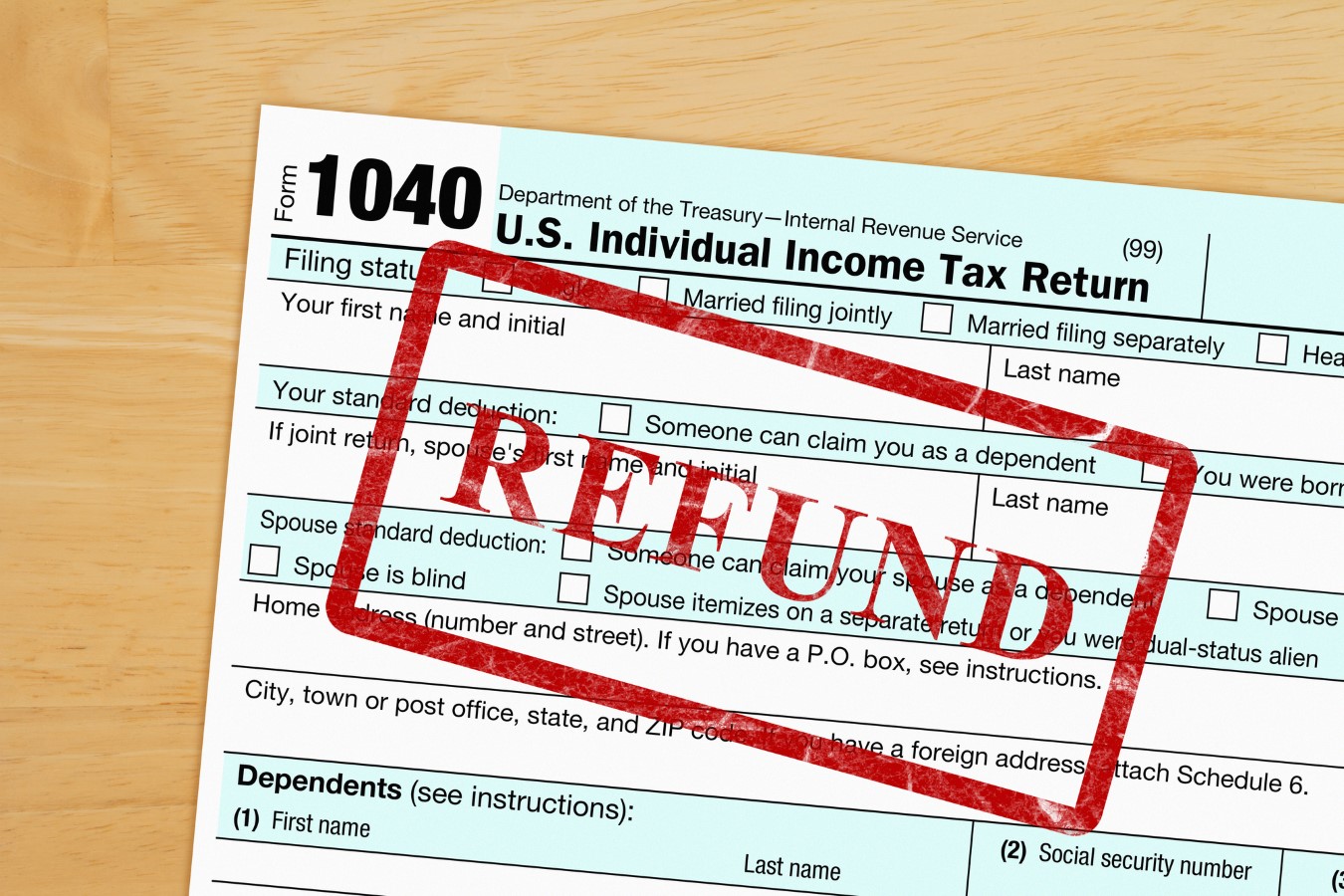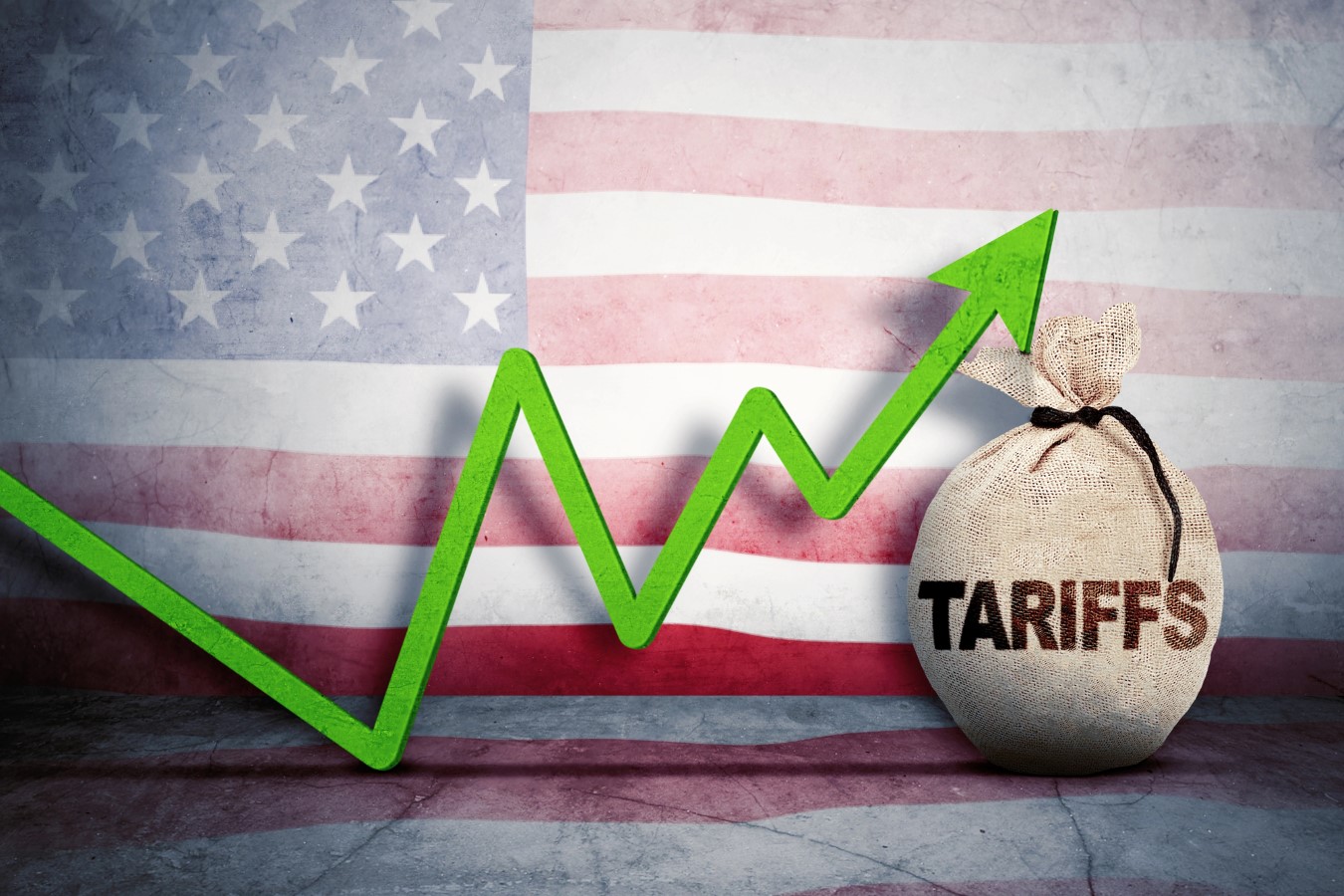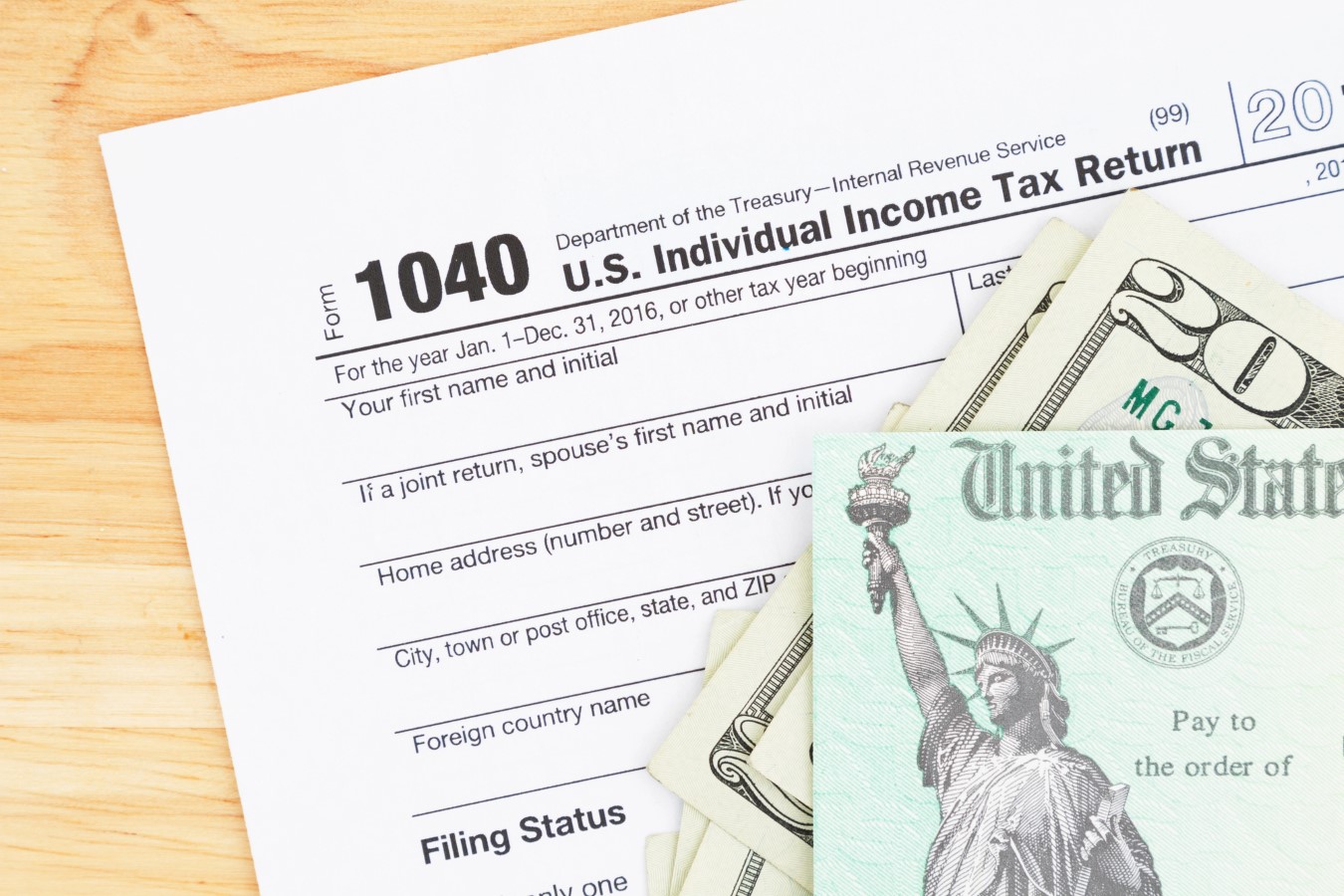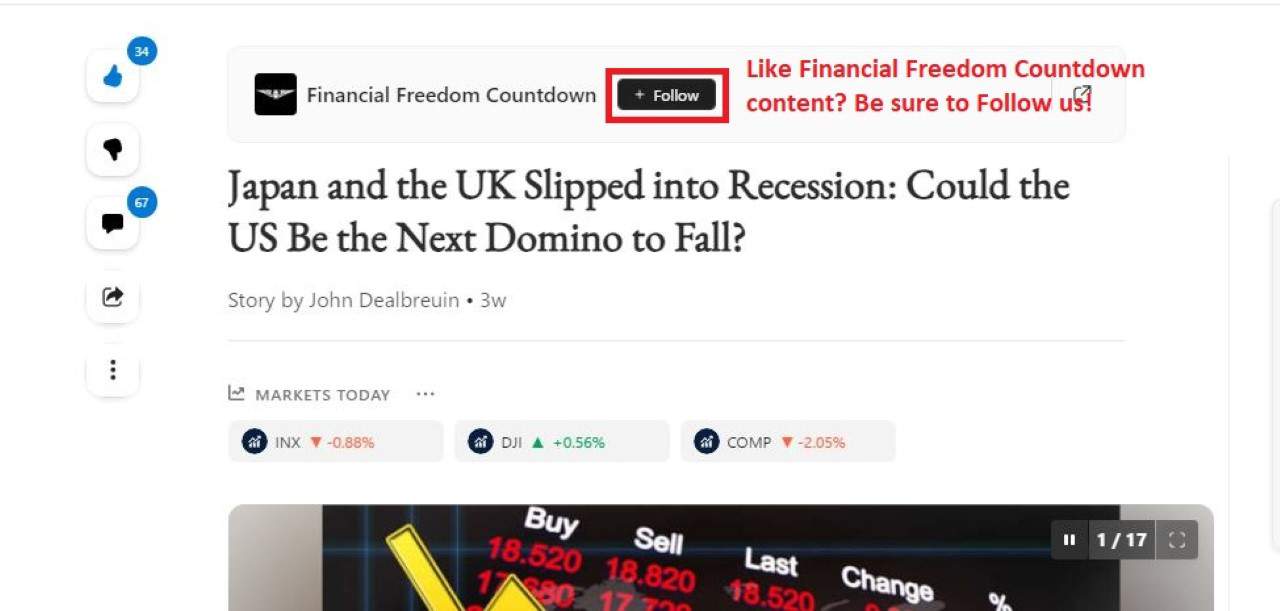Trump Floats $2,000 ‘Tariff Dividend’ For Americans But Treasury Downplays Talk Of Actual Checks – Financial Freedom Countdown
President Donald Trump’s latest social media announcement; a promise to send Americans a $2,000 “dividend” from tariff revenues has generated both excitement and uncertainty.
In a Sunday post on Truth Social, Trump declared that a dividend of “at least $2000 a person (not including high income people!)” would be paid to everyone, funded by the trillions in tariff revenue his administration says it’s collecting.
But Treasury Secretary Scott Bessent quickly clarified that Americans might not actually see checks in the mail. Instead, he hinted that the so-called “dividend” could come through existing tax cuts and deductions already signed into law.
Tariffs as “Revenue Engines” or Just Trade Tools?

Trump’s post painted tariffs as a lucrative source of funding. The Congressional Budget Office estimates that tariffs could generate $300–$400 billion annually, or as much as $3.3 trillion over a decade.
The president framed this windfall as a way to pay down America’s $37 trillion debt; while delivering cash back to middle-class families.
However, the claim came just days after the administration argued before the Supreme Court that tariffs are not primarily meant to raise revenue but to rebalance global trade. That contradiction is now drawing scrutiny from economists and legal observers alike.
Treasury Secretary: The Dividend “Could Come in Lots of Forms”

Appearing on ABC’s This Week, Bessent downplayed Trump’s literal promise of $2,000 checks. “The $2,000 dividend could come in lots of forms, in lots of ways,” he said, suggesting that Americans may already be receiving their “dividend” through new tax provisions.
He cited several tax breaks included in Trump’s recent economic package; such as no tax on tips, no tax on overtime pay, no tax on Social Security, and deductibility for auto loans as examples of the relief the administration is touting as part of its tariff-driven prosperity plan.
From Tax Cuts to Dividends: Repackaging Old Policies as New

Bessent’s remarks suggest that the “dividend” may simply rebrand benefits already baked into Trump’s tax-and-spending legislation. That interpretation could help avoid the need for new congressional approval; but it also risks disappointing Americans who expect an actual payment.
By framing the cuts as a dividend, the administration is signaling that tariff policy is directly tied to household finances; even if the money never takes the form of a government check.
The Political Timing: Supreme Court Showdown Looms

Trump’s renewed defense of tariffs comes amid Supreme Court hearings that could upend his global trade regime. Several justices have questioned whether the president overstepped his authority in imposing wide-ranging tariffs under the International Emergency Economic Powers Act.
If the Court strikes down those tariffs, the government could face over $100 billion in refund liabilities, effectively gutting one of Trump’s signature economic levers heading into 2026.
Trump’s Message: Tariffs Are Making America Rich Again

In his Truth Social posts, Trump celebrated what he described as record prosperity. “Record Investment in the USA, plants and factories going up all over the place,” he wrote, calling critics of tariffs “fools.”
He also boasted that America is “taking in Trillions of Dollars” and will soon start paying down its “ENORMOUS DEBT.”
According to the Treasury Department, tariffs have brought in $195 billion during the first three quarters of this year; helping offset some of the deficit but falling far short of the multi-trillion-dollar projections Trump touts.
Hawley’s Earlier Push for Tariff Rebates Sets a Precedent

The concept of sharing tariff proceeds with the public isn’t entirely new. Earlier this year, Sen. Josh Hawley (R-Mo.) proposed giving Americans $600 tariff rebates; an idea that mirrors Trump’s $2,000 “dividend.”
Hawley argued that ordinary workers should “benefit from the wealth that Trump’s tariffs are returning to this country.”
Trump’s post appears to scale up that concept dramatically, though without offering legislative details or cost estimates.
Debt Reduction or New Spending? The Math Gets Complicated

While Trump insists that tariffs are both paying down the national debt and funding new benefits, economists note that those goals may conflict.
Diverting tariff revenue to pay for dividends or to finance tax cuts could actually worsen the deficit, forcing the Treasury to borrow more.
That’s especially true if tariff receipts decline as foreign exporters adjust or if the Supreme Court overturns key levies.
The Legal and Economic Balancing Act

Chief Justice John Roberts has already raised concerns that tariffs may act as “de facto taxes” — powers reserved for Congress, not the president. That tension underscores the legal fragility of Trump’s trade strategy.
Even if tariffs survive the Court’s review, their role as both a policy weapon and a fiscal cash cow remains contentious. Economists warn that using them to fund domestic spending blurs the line between trade enforcement and taxation.
What Americans Should Expect Next

For now, the “$2,000 tariff dividend” remains more symbolic than tangible. Treasury officials have yet to release any plan for direct payments, and Trump’s comments appear to rely heavily on optimistic revenue forecasts.
Still, the messaging resonates politically: a promise that tariffs aren’t just punishing foreign competitors but also rewarding American households. Whether that promise materializes into dollars; or just tax breaks may depend on Congress, the courts, and the math.
Trump’s $2,000 Tariff “Dividend” Sparks Confusion and Big Expectations

Trump’s $2,000 “tariff dividend” announcement blends populist appeal with fiscal ambiguity. While the president touts it as proof that tariffs are enriching America, his own Treasury chief suggests it may simply reflect existing tax relief measures. With the Supreme Court weighing the legality of Trump’s trade powers, the future of both the tariffs and any potential dividend remains uncertain.
Like Financial Freedom Countdown content? Be sure to follow us!
Treasury Hikes I Bond Rate to 4.03%, Yet Fixed Portion Drops — Here’s What It Means for Savers

The U.S. Treasury has announced a new 4.03% rate for Series I savings bonds, slightly higher than the previous 3.98%. But beneath the bump lies a subtle setback: the fixed-rate portion has slipped to 0.9% from 1.1%. That quiet change could reduce long-term returns for investors hoping to lock in inflation-protected income, even as I bonds remain one of the safest options for conservative savers.
Treasury Hikes I Bond Rate to 4.03%, Yet Fixed Portion Drops — Here’s What It Means for Savers
Why Many Seniors Are Ditching Medicare Advantage for Medigap; Even With Higher Premiums

As Medicare open enrollment heats up, millions of seniors are facing one of the most consequential financial decisions of retirement: whether to stay with a Medicare Advantage plan or switch to a Medicare supplemental policy; better known as Medigap. The choice doesn’t just determine monthly costs; it can also affect access to doctors, treatment options, and out-of-pocket spending for years to come.
Why Many Seniors Are Ditching Medicare Advantage for Medigap; Even With Higher Premiums
Big 2026 Refunds Ahead as Trump’s Tax Bill Kicks In, JPMorgan and Oxford Economics Say

Millions of Americans could see significantly larger tax refunds when they file their 2025 returns early next year; and both Oxford Economics and JPMorgan Asset Management say the surge is real. The driver behind the coming “refund wave” is former President Donald Trump’s “One Big Beautiful Bill Act,” a sweeping tax overhaul that took effect retroactively at the start of 2025. Both research firms say the combination of new deductions, delayed IRS withholding adjustments, and expanded tax breaks will result in tens of billions in overpaid taxes being refunded in 2026. Oxford Economics estimates that total taxpayer savings could reach $50 billion through bigger refunds or lower 2026 tax bills. JPMorgan’s strategists say the early-year refund bump could be strong enough to noticeably lift household spending and short-term economic growth.
Big 2026 Refunds Ahead as Trump’s Tax Bill Kicks In, JPMorgan and Oxford Economics Say

The Social Security Administration announced that monthly benefits will increase by 2.8% in 2026, slightly above this year’s 2.5% cost-of-living adjustment (COLA). While the news might sound positive, many seniors say it’s far from enough to keep pace with the surging cost of everyday necessities.
Social Security’s 2.8% COLA Raise Could Be Wiped Out by Soaring Medicare Costs, Experts Warn

Did you find this article helpful? We’d love to hear your thoughts! Leave a comment with the box on the left-hand side of the screen and share your thoughts.
Also, do you want to stay up-to-date on our latest content?
1. Follow us by clicking the [+ Follow] button above,
2. Give the article a Thumbs Up on the top-left side of the screen.
3. And lastly, if you think this information would benefit your friends and family, don’t hesitate to share it with them!

John Dealbreuin came from a third world country to the US with only $1,000 not knowing anyone; guided by an immigrant dream. In 12 years, he achieved his retirement number.
He started Financial Freedom Countdown to help everyone think differently about their financial challenges and live their best lives. John resides in the San Francisco Bay Area enjoying nature trails and weight training.
Here are his recommended tools
Personal Capital: This is a free tool John uses to track his net worth on a regular basis and as a retirement planner. It also alerts him wrt hidden fees and has a budget tracker included.
Platforms like Yieldstreet provide investment options in art, legal, real estate, structured notes, venture capital, etc. They also have fixed-income portfolios spread across multiple asset classes with a single investment with low minimums of $10,000.